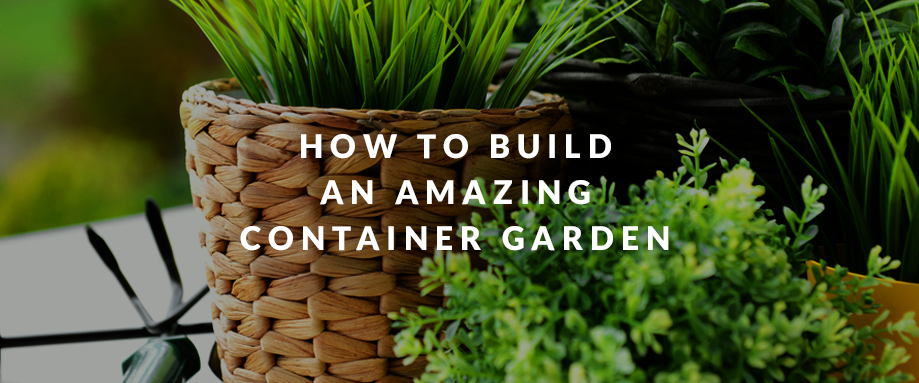How to Build an Amazing Container Garden

Just because you have acres of space doesn’t mean you have to fill that land with a massive vegetable or flower garden. You may love the untouched rolling hills or loathe the idea of cutting down trees to make space. Maybe you just don’t want the sheer amount of work that comes with planting and harvesting a traditional garden. If any of this sounds like you, but you still want to produce your own veggies, maybe you should consider a container garden.
What Is a Container Garden?
As you might expect, a container garden is confined to planters and other contained spaces. Each container can produce almost any of your favorite vegetables, though you might find growing corn in a planter a little difficult. For larger crops, you can create a container with split logs, railroad ties, or even concrete. Build an enclosed area, fill it with rich dirt, and then you have a space for corn, pumpkins, and melons.
In other words, you can produce all the vegetables you want right outside your door. No need to till, plant, cultivate, and harvest acres of land!
What Are My Container Options?
The choices for containers are as varied as the garden you’ll plant. While you can certainly use traditional planters, perhaps made of terracotta or clay, other options could work better for your needs. Some containers have been specially created to help you build the best possible garden. You can also use salvaged items, such as buckets, feeding troughs, or even clawfoot tubs.
Be sure you understand the needs of each plant before you choose a container. Some will need the soil to remain damp at all times, so a container that drains too well might actually kill your veggies. Some may need aerated soil, so a pot without a drainage system or additional holes could cause problems, too. The beauty of this need for various container styles means you’ll cultivate a coordinated garden with diverse patterns and colors.
More Container Garden Tips for Beginners
In addition to evaluating the pots for drainage and aerating purposes, there are some other things you’ll need to keep in mind. First, know the sunlight needed for each particular plant. This will help in placement around the outside of your home. Some may need shade through most of the day, especially delicate plants that might wilt with Southern summer temperatures.
Also, pay attention to the nutrients your plants are getting. While contained in pots, they’ll have no access to the natural nutrients of the soil. It’s up to you to fertilize the plants so they’ll grow strong and healthy.
Finally, pay attention to your plants. No gardening of any kind is a “set it and forget it” endeavor. Keep the plant tags with instructions for care, and look up any further information if you don’t get the answers from the provided card. If plants aren’t thriving, slowly acclimate them to other areas of your yard where they might get more sunlight, less water, or other environmental boosts.
When autumn comes, you’ll have a bounty bigger than you thought possible from your small containers. Sure, there will be some trial and error, but that’s part of the fun of gardening.
